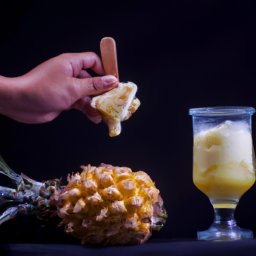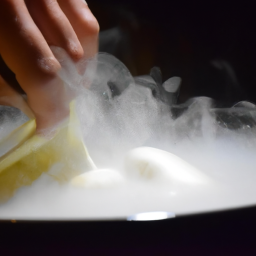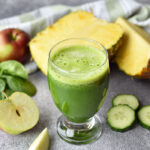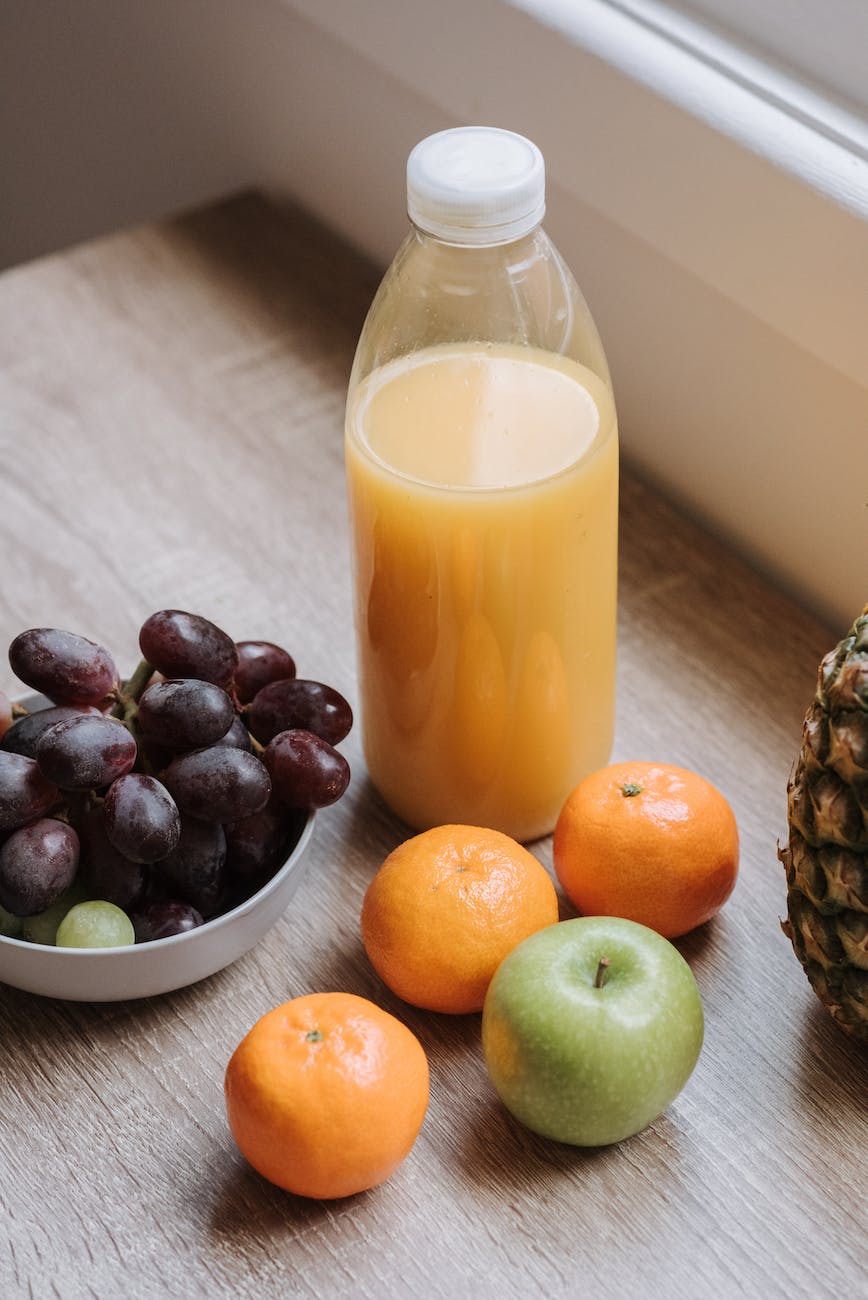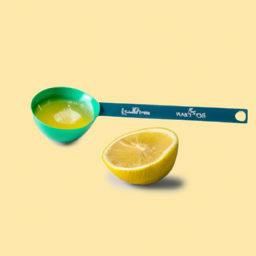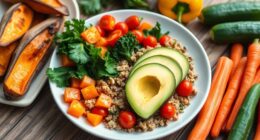Creating my own fruit juices at home brings me a lot of joy, with pineapple juice standing out as one of my top picks. It’s not just tasty, but it also offers numerous health advantages including enhancing the immune system, helping with digestion, and minimizing inflammation.
But did you know that you can make pineapple juice with the skin? Yes, you read that right – you can use the skin of the pineapple to make a refreshing and nutritious juice. Using the skin of the pineapple is important because it contains a high concentration of bromelain, a digestive enzyme that helps break down proteins and aids in digestion.
Plus, the skin is also rich in antioxidants and other nutrients that are beneficial to our health. In this article, I’ll be sharing with you my step-by-step process for making pineapple juice with the skin, so you can enjoy all of its amazing benefits.
Key Takeaways
- Choosing the right pineapple is important to ensure maximum nutritional benefits.
- Cleaning and preparing a pineapple involves removing any dirt, debris, or pesticides from the skin.
- Blending the leftover pineapple skin creates a flavorful and nutritious juice, which can be paired with different foods or garnished creatively for added flavor and visual appeal.
- Adding water or other ingredients like apples, ginger, or spinach can create flavor variations and boost the nutritional value of the juice. Straining the mixture creates a smooth and pulp-free juice that’s ready to drink.
Benefits of Pineapple Juice
Let’s explore the amazing benefits of pineapple juice, shall we? Pineapple juice is a rich source of vitamins, minerals, and enzymes that provide significant nutritional value. It contains high levels of vitamin C, which is essential for healthy skin, the immune system, and wound healing.
Pineapple juice also contains vitamin B6, which supports the nervous system and helps to maintain healthy brain function. In addition to its nutritional value, pineapple juice offers numerous health benefits.
It has anti-inflammatory properties that can help to reduce pain and swelling, making it an ideal drink for people with arthritis or other inflammatory conditions. Pineapple juice also contains bromelain, an enzyme that aids in digestion by breaking down proteins. This enzyme has been shown to reduce bloating, constipation, and other digestive issues.
With all these benefits in mind, it’s easy to see why pineapple juice is a great addition to any healthy diet. Now, let’s talk about the importance of using the skin to make this juice.
Importance of Using the Skin
Using the skin of a pineapple is crucial to extracting its full nutritional value. Pineapple skin is rich in antioxidants, fiber, and enzymes, all essential for good health.
Antioxidants protect the body against harmful free radicals, fiber promotes good digestion, and enzymes play a vital role in breaking down food and absorbing nutrients.
Using the skin of a pineapple also has a sustainability aspect. It reduces food waste and makes the most of available resources. Instead of throwing away the skin, we can use it to make delicious and healthy juice, which benefits both our bodies and the planet.
Choosing the right pineapple is important to ensure we get the most out of its nutritional benefits.
Choosing the Right Pineapple
Picking the perfect pineapple is like finding a treasure, as the sweetest and most nutritious fruit lies within its rough exterior. When choosing a pineapple, it’s important to consider its ripeness.
A good indicator is the color of the leaves. If they’re green and healthy-looking, it means the pineapple is fresh and ripe. However, if the leaves are brown or wilted, the pineapple may be overripe and not as sweet.
Another factor to consider is the quality of the pineapple. When looking at the skin, make sure there are no bruising or soft spots. A good pineapple should have a firm texture and a uniform color.
It’s also important to give the pineapple a sniff. A ripe pineapple should have a sweet aroma. With these simple tips, you’ll be able to pick out the perfect pineapple for making your delicious pineapple juice.
When you’ve selected the perfect pineapple, the next step is to clean and prepare it.
Cleaning and Preparing the Pineapple
Once you have chosen the ideal pineapple, it is essential to properly clean and prepare it for consumption. The cleaning process involves removing any dirt, debris, or pesticides that may be on the pineapple’s skin. To do this, you will need a few tools.
Firstly, you will need a clean cutting board and a sharp knife. I recommend using a serrated knife, as it will make it easier to cut through the tough skin of the pineapple. You will also need a vegetable peeler to remove any remaining skin or blemishes. Lastly, a clean cloth or paper towel will come in handy for drying the pineapple after cleaning.
To further illustrate the cleaning process, here is a table that breaks it down into five simple steps:
| Step | Action |
|---|---|
| 1 | Rinse the pineapple under running water |
| 2 | Cut off the top and bottom of the pineapple |
| 3 | Stand the pineapple upright on the cutting board |
| 4 | Use the vegetable peeler to remove any remaining skin or blemishes |
| 5 | Dry the pineapple with a clean cloth or paper towel |
Now that the pineapple is cleaned and prepped, it’s time to move on to the next step: cutting the pineapple and separating the skin.
Cutting the Pineapple and Separating the Skin
Don’t let the tough exterior intimidate you – with the right technique, cutting and separating the skin of a pineapple can be a breeze.
First, I suggest using a sharp chef’s knife to cut off the top and bottom of the pineapple. Then, slice off the skin in sections, following the natural curve of the fruit. As you do this, you’ll notice that the skin is much thicker than the flesh, so take your time and be careful not to waste any of the sweet fruit.
Once you’ve separated the skin from the flesh, don’t throw it away! Using pineapple skin creatively can add a ton of flavor and nutrients to your juice. Some people choose to use the skin as a garnish, while others chop it up and toss it into the blender.
Keeping the skin intact also has its benefits – it contains a high amount of bromelain, an enzyme that aids in digestion and can reduce inflammation in the body. With all these benefits, it’s definitely worth the extra effort to keep the skin intact.
Now, let’s move onto blending the pineapple skin to create a delicious and healthy juice.
Blending the Pineapple Skin
Get ready to be amazed by how delicious and nutritious this blended concoction can be – simply toss the leftover pineapple skin into the blender and watch as it transforms into a flavorful elixir. Don’t be fooled by the rough exterior of the skin – it’s packed with nutrients such as bromelain, vitamin C, and antioxidants.
The taste profile is slightly bitter and tangy, but can easily be balanced out with the addition of other ingredients. When blending the pineapple skin, it’s important to cut it into smaller pieces to ensure it blends evenly. I recommend blending it on high speed for about 1-2 minutes until it reaches a smooth consistency.
The nutritional value of the skin is not to be underestimated – studies have shown that it can help with digestion, reduce inflammation, and even boost immunity. To take this pineapple juice to the next level, try adding water or other ingredients to dilute or enhance the flavor.
But first, let’s talk about the importance of using a high-quality blender for the best results.
Adding Water or Other Ingredients
To enhance the flavor and nutritional benefits of pineapple skin juice, you can add water or other ingredients to the mixture. Adding water makes the juice less concentrated and more refreshing, while adding other fruits and vegetables like carrots or cucumbers can create flavor variations and boost the nutritional value of the juice.
Water is the simplest ingredient you can add to the pineapple skin juice. You can add as much water as you want, depending on your preference. For a more flavorful and nutritious juice, try adding other ingredients like apples, ginger, or spinach. These ingredients not only add extra flavor to the juice but also provide additional vitamins and minerals.
Once you have added the desired ingredients, you can proceed to the next step of straining the juice.
Straining the Juice
Now that you’ve added water and other ingredients, it’s time to strain the mixture to create a smooth and pulp-free juice that’s ready to drink. To achieve the desired juice consistency, I recommend using a fine mesh strainer or cheesecloth.
Here are some tips to help you get the most juice out of your pineapple skin:
- Hold the strainer over a large bowl and pour the mixture through the strainer slowly. This’ll help to separate the juice from any remaining pulp or bits of skin.
- Use a spoon to press down on the pulp and extract as much juice as possible. Be sure to scrape the bottom of the strainer to get all the juice out.
- If you’re using cheesecloth, gather the corners and squeeze out the juice. This may take a bit more effort, but it’ll result in a smoother juice.
- If you prefer a thicker juice, you can skip the straining step altogether and simply blend the mixture until smooth.
Now that your pineapple juice is strained and ready to go, it’s time to serve and enjoy!
Serving and Enjoying Pineapple Juice with Skin
When it’s ready, you’ll love how refreshing and delicious drinking this pineapple skin juice can be. Once you’ve strained the juice, it’s time to serve it up and enjoy it. One way to make it even more enjoyable is to get creative with garnishing. I like to add a slice of fresh pineapple or a sprig of mint to my glass for an extra pop of flavor and visual appeal. You could also try rimming your glass with sugar or coconut flakes for a tropical touch.
Another way to take your pineapple skin juice to the next level is to pair it with different foods. It’s a great drink to enjoy on its own, but it also pairs well with certain dishes. For example, a glass of pineapple juice with skin would be the perfect accompaniment to a plate of grilled shrimp or fish tacos. You could even use it as the base for a tropical cocktail. The possibilities are endless, so don’t be afraid to get creative and experiment with different flavors.
Speaking of getting creative, there are plenty of other uses for pineapple skin besides making juice. Let’s explore some of those in the next section.
Other Uses for Pineapple Skin
You’re missing out on a world of possibilities if you toss away pineapple skins without realizing their potential for adding flavor and nutrition to your meals. Pineapple skins are not only edible but can also be used for various purposes.
Here are some of the uses for pineapple skins that you may find interesting:
-
DIY skincare: Pineapple skins contain bromelain, an enzyme that has anti-inflammatory and exfoliating properties. You can use the skin as a natural exfoliant by rubbing it on your skin or making a face mask by blending the skin with honey or yogurt. Pineapple skin can also be used to treat acne and reduce dark spots.
-
Culinary uses: Pineapple skins can be used to infuse flavor in various dishes. You can use them to make a broth for soups or stews, or add them to your tea for a tropical twist. Pineapple skin can also be used to ferment vegetables or make vinegar.
Don’t underestimate the power of pineapple skins. They can be a great addition to your beauty routine and elevate your culinary creations. So next time you’re cutting a pineapple, make sure to keep the skin and explore its many uses.
Frequently Asked Questions
Can I use canned pineapple instead of fresh pineapple?
Yes, canned pineapple is a viable alternative to fresh pineapple for making juice. However, fresh pineapple contains more nutritional benefits, such as higher amounts of vitamin C and digestive enzymes.
How long does pineapple juice with skin last in the fridge?
Storing pineapple juice with skin can be tricky, but I’ve found that it can last up to 3 days in an airtight container in the fridge. Don’t throw away the skin, use it to infuse water or make a delicious marinade for meats.
Is it safe to consume pineapple juice with skin if I have allergies?
As someone with allergies, I would caution against consuming pineapple juice with skin. The skin may contain allergens that could trigger a reaction. However, it’s important to note that the skin also contains valuable nutritional benefits.
Can I use a juicer instead of a blender to make pineapple juice with skin?
Oh sure, because who needs a blender when you can just toss a whole pineapple into a juicer, skin and all? But seriously, while a blender may be better for extracting the skin’s benefits, a juicer can still work. Just make sure to remove any tough parts first.
What are some potential side effects of consuming pineapple juice with skin?
Skin consumption safety is important when consuming pineapple juice with skin. Potential side effects include digestive discomfort, mouth sores, and skin irritation. However, the skin provides additional nutritional benefits such as fiber and vitamin C.
Conclusion
In conclusion, making pineapple juice with the skin is a great way to reap all the benefits that this tropical fruit has to offer. Not only does it add a unique flavor, but the skin also contains valuable nutrients that are often discarded.
With the right preparation and a few simple steps, you can easily make a delicious and healthy drink that’s perfect for any occasion. As I sipped on my freshly made pineapple juice with skin, I couldn’t help but feel a sense of satisfaction knowing that I’d utilized every part of the fruit.
The tangy sweetness of the juice was a perfect complement to the warm sun beating down on me. It was like I was transported to a tropical paradise with each sip. So next time you have a pineapple, don’t throw away the skin. Instead, use it to make a refreshing and nutritious drink that’ll leave you feeling satisfied and refreshed.
Ilana has been a vegan for over 10 years. She originally made the switch for health reasons, but soon found herself becoming more and more passionate about the ethical and environmental implications of a vegan lifestyle. Ilana is the author of The Graceful Kitchen, a blog all about veganism. She loves to cook up delicious and nutritious vegan meals, and share her recipes with others who are interested in leading a cruelty-free life. Ilana is also a strong advocate for using whole foods as the foundation of a healthy diet, and believes that going vegan is one of the best ways to achieve this.
